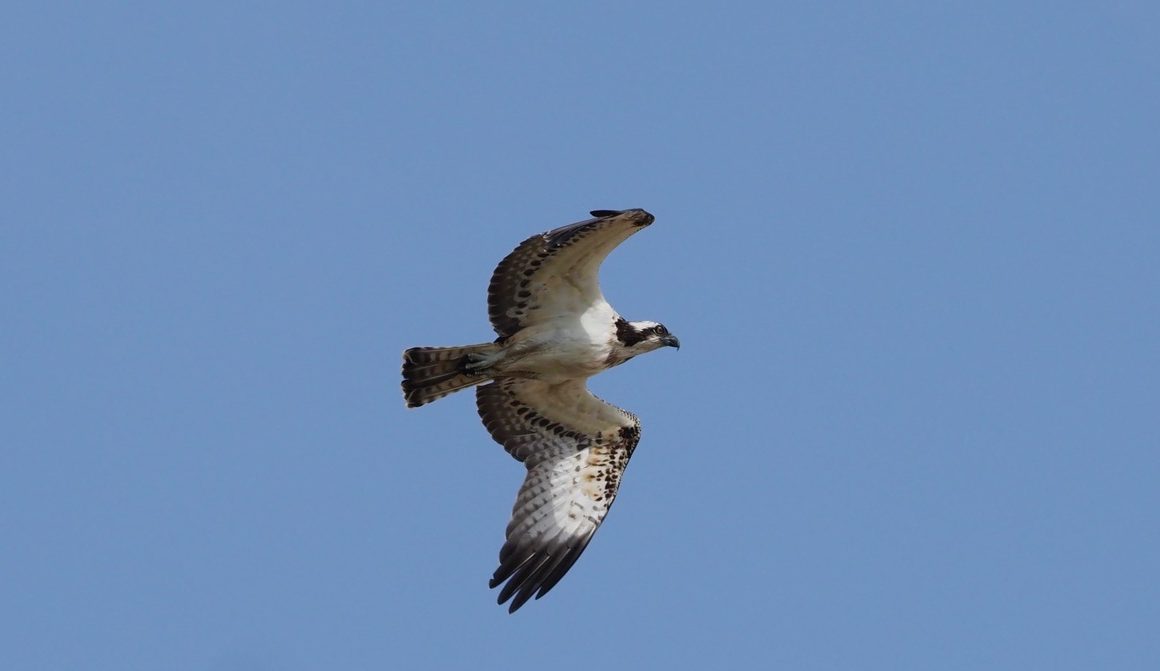
Goodbye August, I won’t be sorry to see you go. Unless you happen to live near the coast, in which case there are plenty of migrant waders to see, August is pretty much a duff month for birds in England. There’s not much song, many spring migrants have already departed south for their winter quarters, while the majority of residents are moulting, so become shy and difficult to see. August is arguably the least exciting bird month of the year.
I keep a monthly tally how many species I’ve seen, and at the time of writing my August score is 97, my second lowest monthly total in England this year. My best month was June, with 130 species, but I even managed a decent 115 in July. (These totals are all for England, and don’t include birds seen overseas). This month’s list is disappointing, as I have put some effort into finding birds, and have visited both the Norfolk and Suffolk coasts.
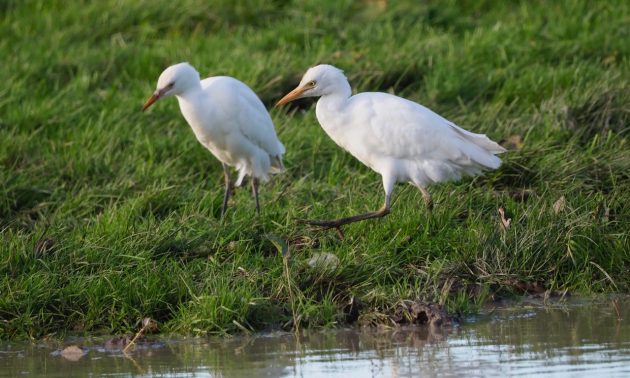
Cattle Egrets in North Norfolk – 21st-century colonists of England
Cley is one of England’s most famous bird reserves, as well as one of its oldest. (It was bought by the Norfolk Naturalists’ Trust, now Norfolk Wildlife Trust, in 1926). It’s always a reliable site for seeing something good, and it didn’t disappoint on my recent visit at the start of the month. Perhaps most notable was a flock of 16 Cattle Egrets. This was the biggest flock that I’ve ever seen in England. These egrets are new colonists in England, first breeding in 2008. No doubt they will become much commoner in the years to come, as they are a bird that, once established, tends to increase rapidly.
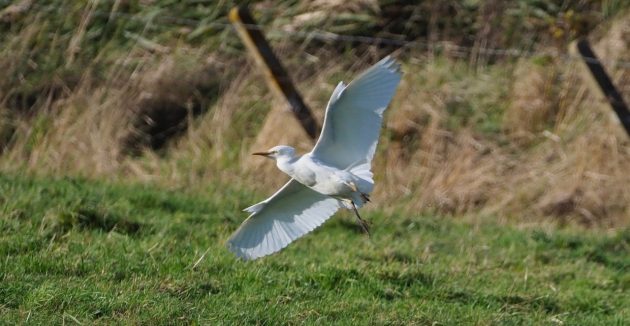
I’m always fascinated by the fact that this Old World bird didn’t reach the Americas until the late 1930s, having flown the 2850km from the African coast to the Guianas. They first bred in North America, in Florida, in 1953, and by 1962 had started nesting in Canada. They are also relatively recent colonists of China, South Korea and Japan, arriving in Australia via New Guinea in the early 1900s. They first bred in New Zealand in 1963. When you consider this astonishing rate of expansion it seems surprising that they have taken so long to reach Britain.
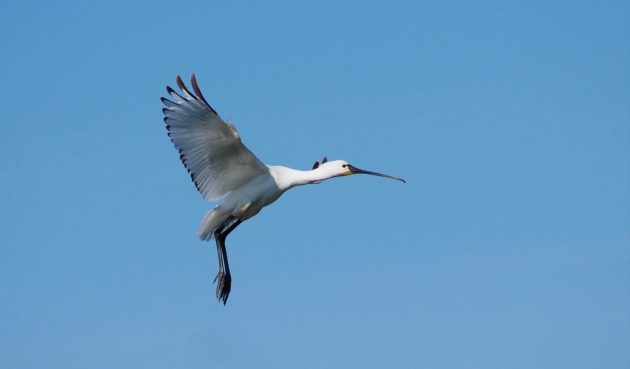
The black-tipped flight feathers how that this is an immature Spoonbill
Another recent colonist of England is the Spoonbill. The first recorded nest was in North Norfolk in 2010, and numbers have increased here every year since, while this year nesting was recorded at several new sites in Eastern England. I always enjoy seeing Spoonbills, though they have now become a familiar sight on coastal reserves in eastern England. There was just one at Cley, an immature with black wing tips.
This visit to Cley did add a couple of sandpipers to my English year list: Green and Curlew. I’d seen both earlier in the year in Cyprus and Greece. In their red breeding plumage Curlew Sandpipers are handsome birds. This individual was moulting, but still predominately in summer plumage. It was elusive and hard to find, and never came closer than a couple of hundred yards.
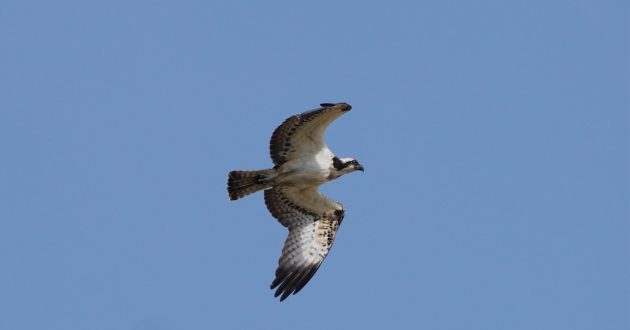
Later the same day I called in at Titchwell, a popular RSPB reserve on the North Norfolk coast. Here much the best sighting was an unexpected Osprey (above). Ospreys are regular migrants through Norfolk and Suffolk in the late summer and early autumn but seeing one is always a matter of luck. This was my first in England for a few years, though it’s a bird I’d already seen this year in southern Spain.
A couple of weeks later I visited Minsmere, the RSPB’s flagship reserve on the Suffolk coast. I was hoping for a good crop of passage waders: I saw 10 different species, not a great total, but it did include my first Spotted Redshanks of the year in England, along with both Ringed and Little Ringed Plovers, Black-tailed Godwits and Green and Common Sandpipers. There were no real surprises among the birds I saw, but some big flocks of Common Scoters offshore were interesting. Presumably these were non-breeding birds: very few (a mere 50 pairs) nest in Scotland, and none in England. Most of our wintering birds come from northern Europe and Siberia.
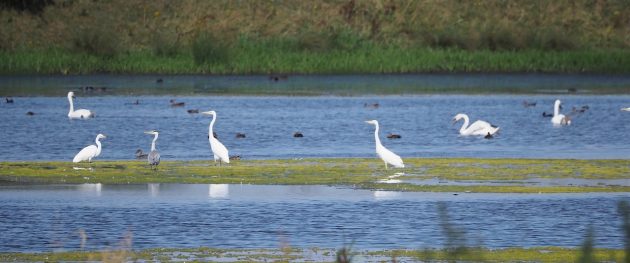
Great White Egrets (with a Grey Heron, Mute Swans and Coots) at Lakenheath
Later in the month I visited another Suffolk RSPB reserve – Lakenheath, an extensive reedbed reserve, created out of what were formerly carrot fields. It’s an impressive example of habitat creation, and holds breeding Bitterns, Marsh Harriers and Cranes. Of these three, the only one that showed during my visit was Marsh Harrier. The Cranes had apparently bred successfully, but they kept their heads down so I failed to see, or even hear, them. My photograph (below) was taken at Lakenheath, but on a previous visit. Worthy of note was seeing 24 Great Egrets all at once – this is another former rare bird that is colonising southern England at a remarkable pace.
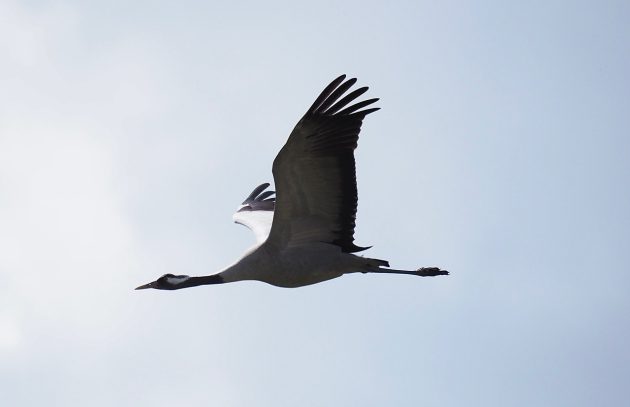
My last notable bird of the month, and my 97th species, was a single Wood Sandpiper (below) on a small Norfolk wetland reserve, Dickleburgh Moor. These dainty sandpipers are scarce migrants in East Anglia in the autumn, but a bird you should see if you try hard enough. I’d seen plenty earlier in the year in Cyprus and Greece, but this was my first in England. It was a distant view on a sunny day, but one when a strong wind made using the telescope tricky.
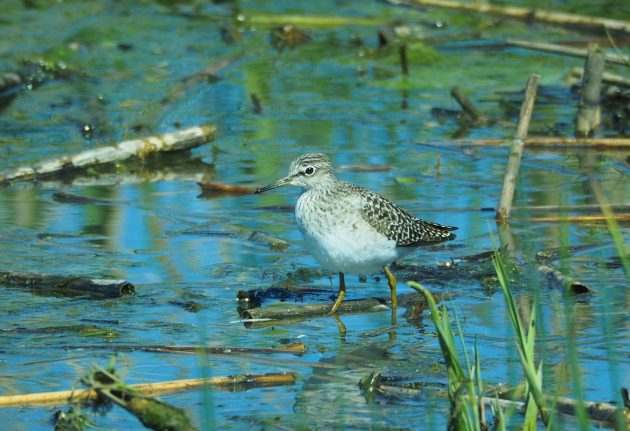
September is a much more promising month for birds. I’ve got another trip to the Mediterranean coming up, this time to the Peloponnese in the south-west of Greece. It’s not a destination that is popular with birders, so I am not sure what I might find, always an exciting prospect. I will report here in due course.













My weekly habit now: waiting for David’s posts to arrive.